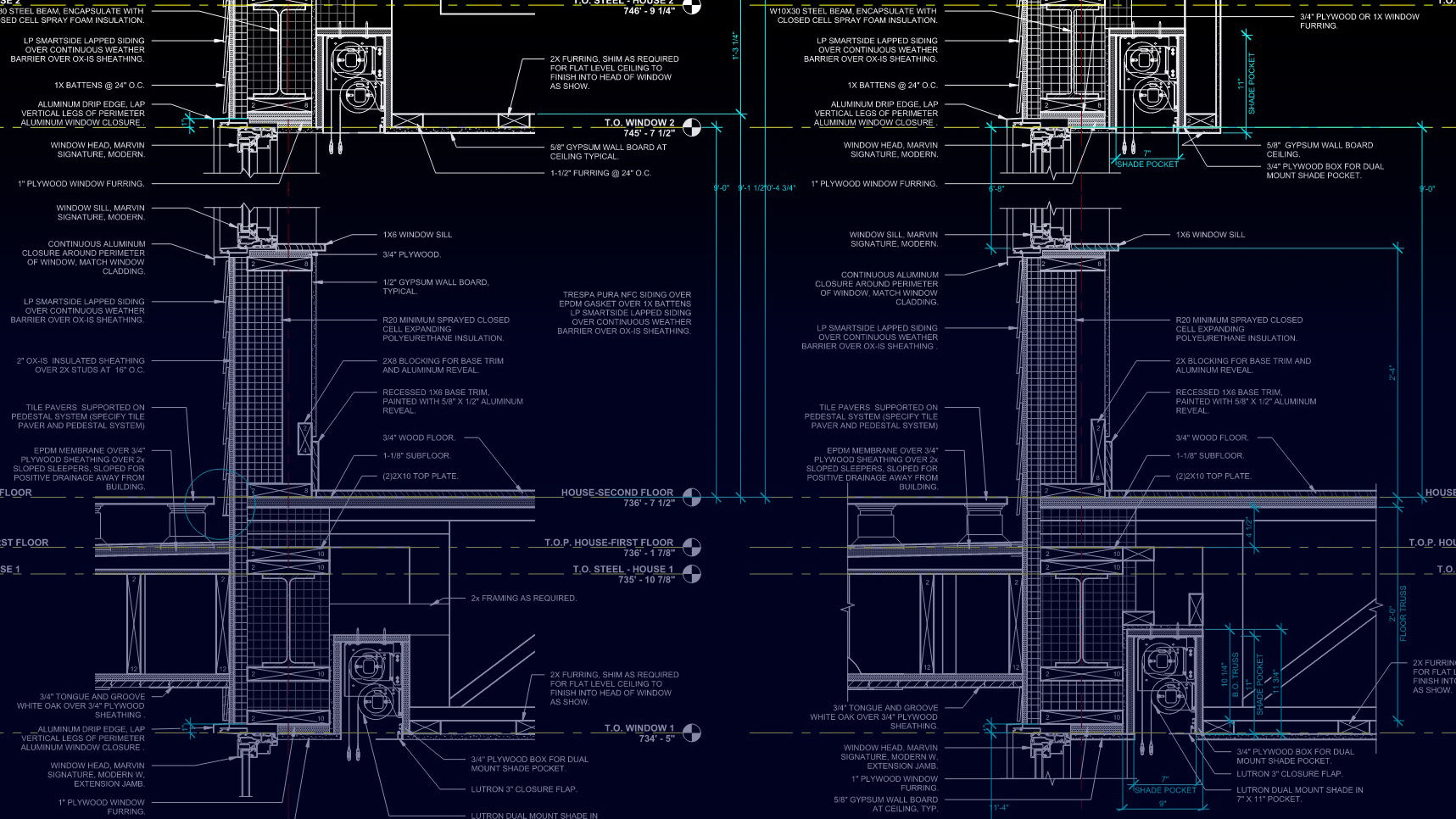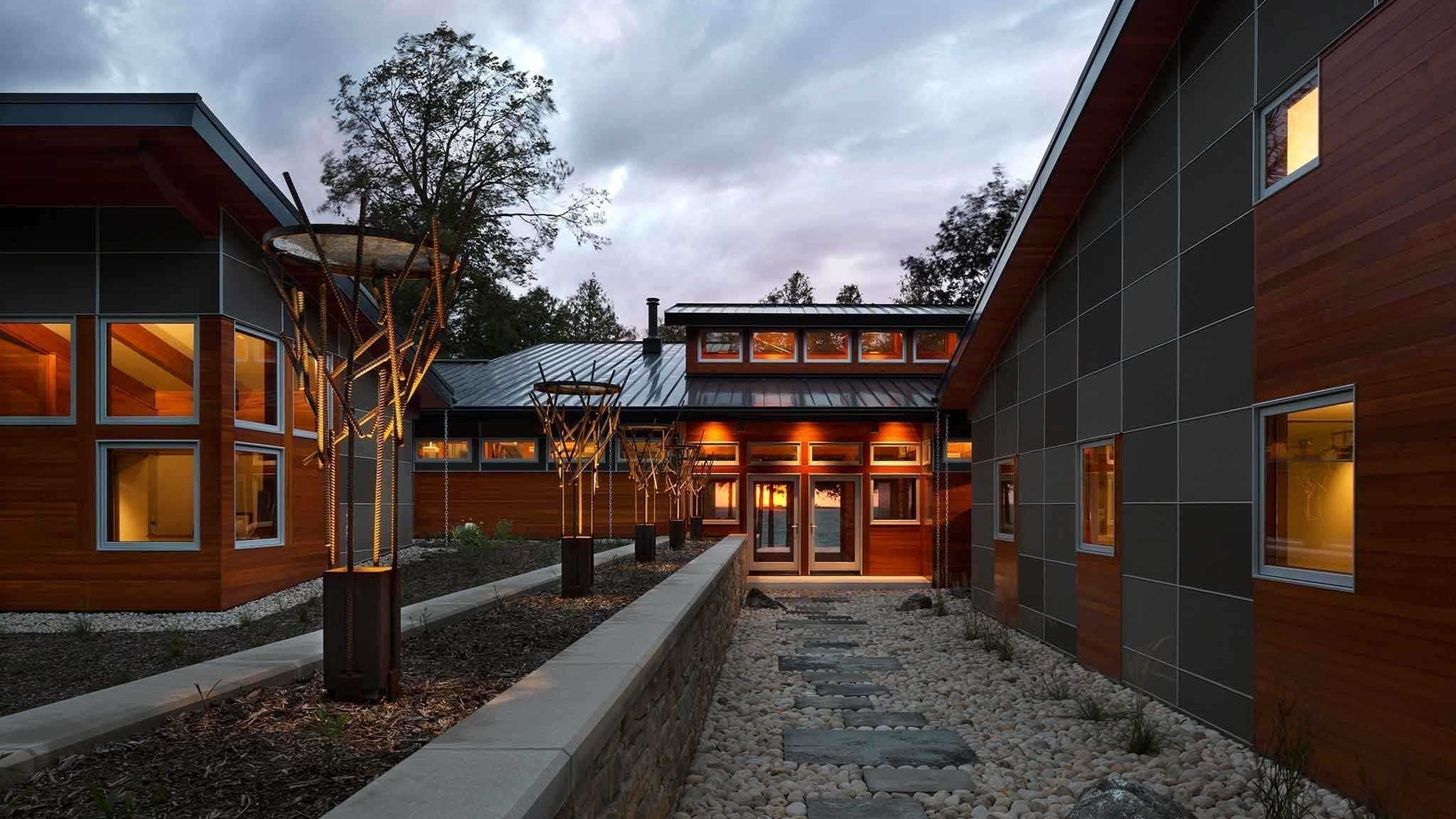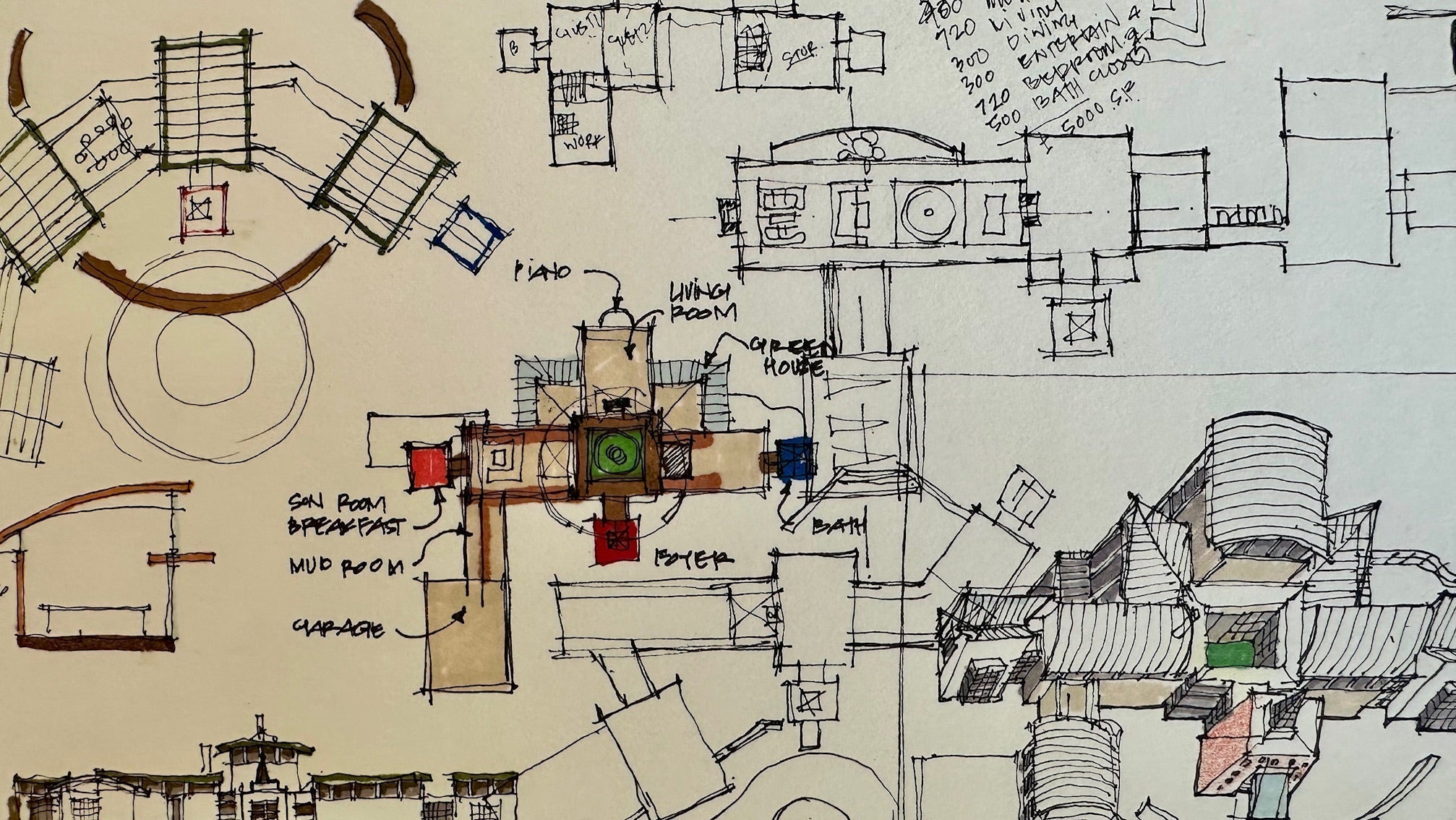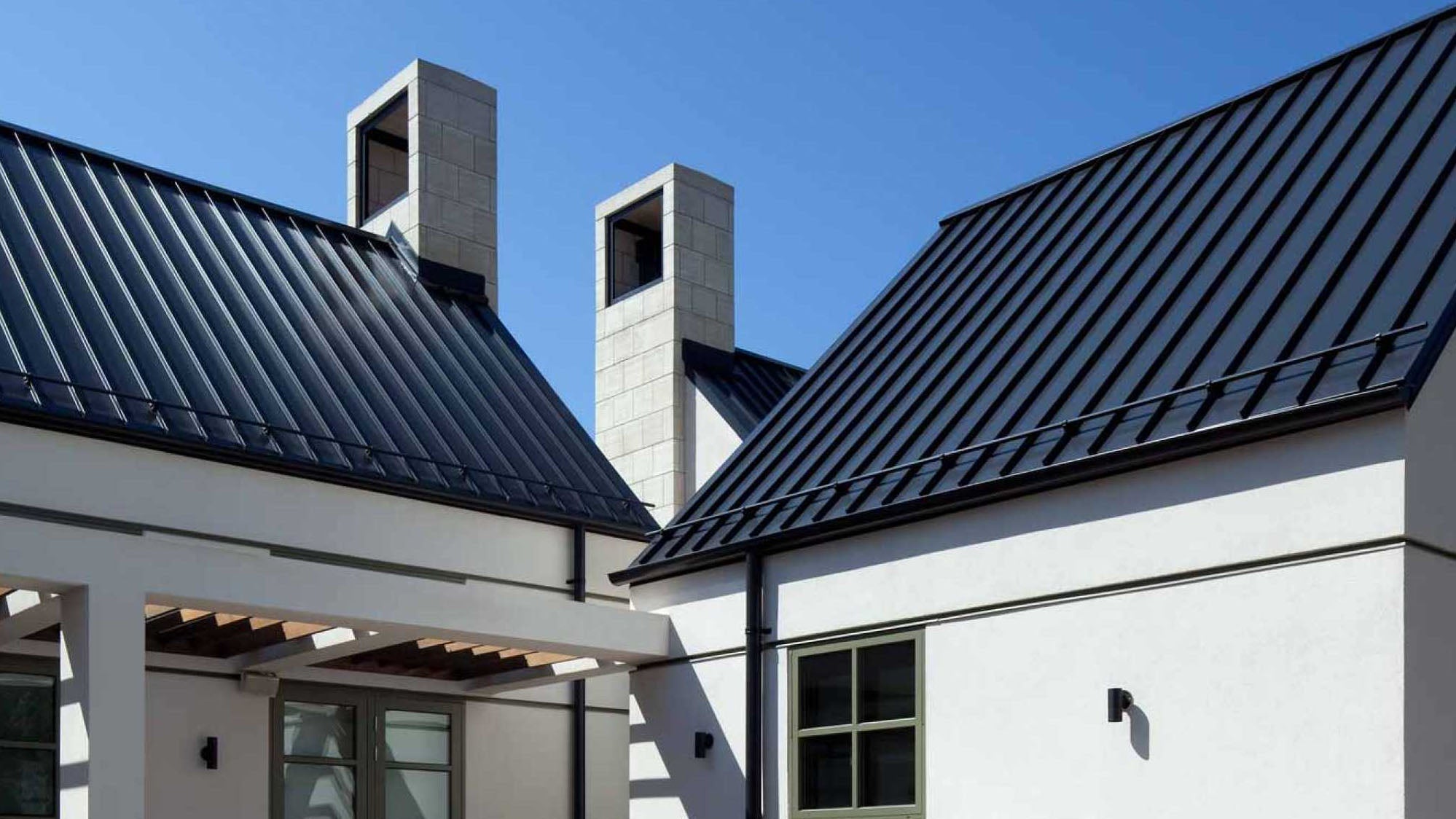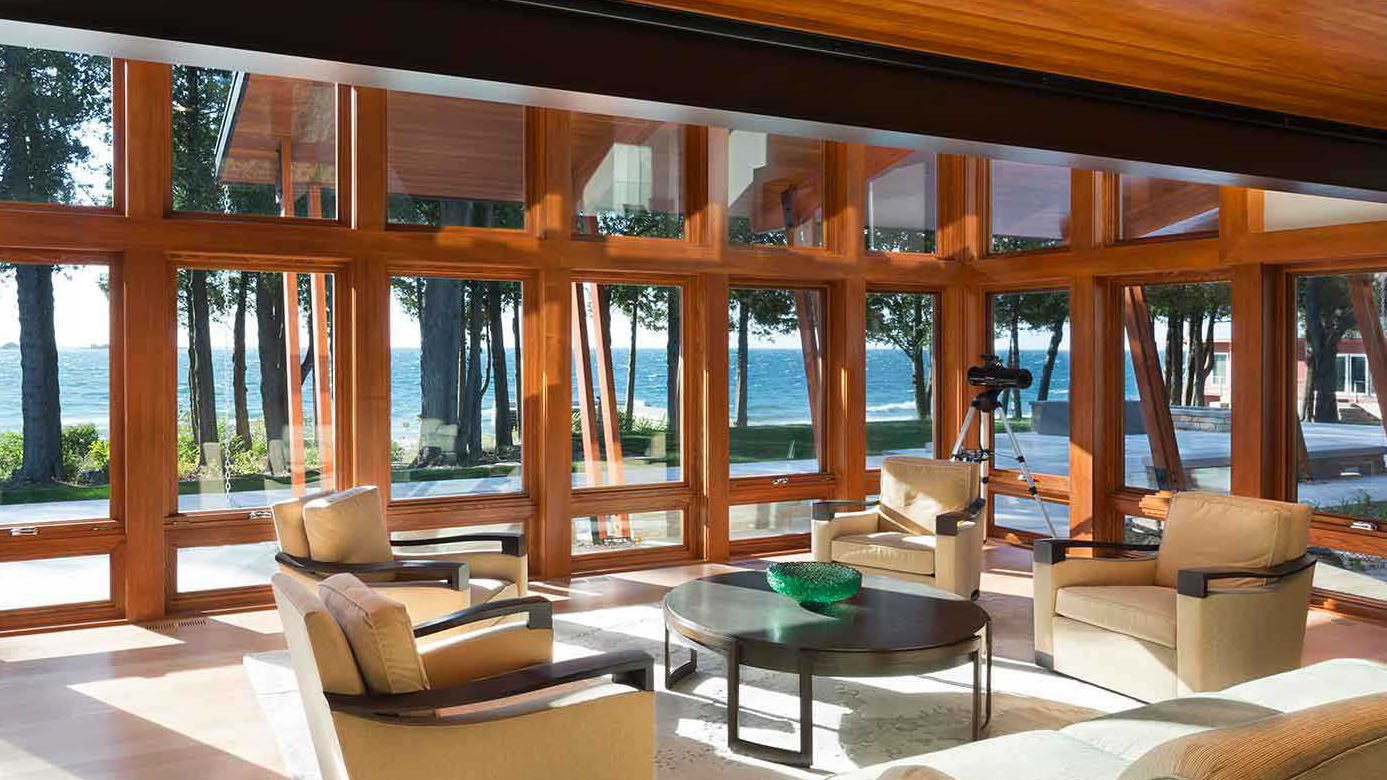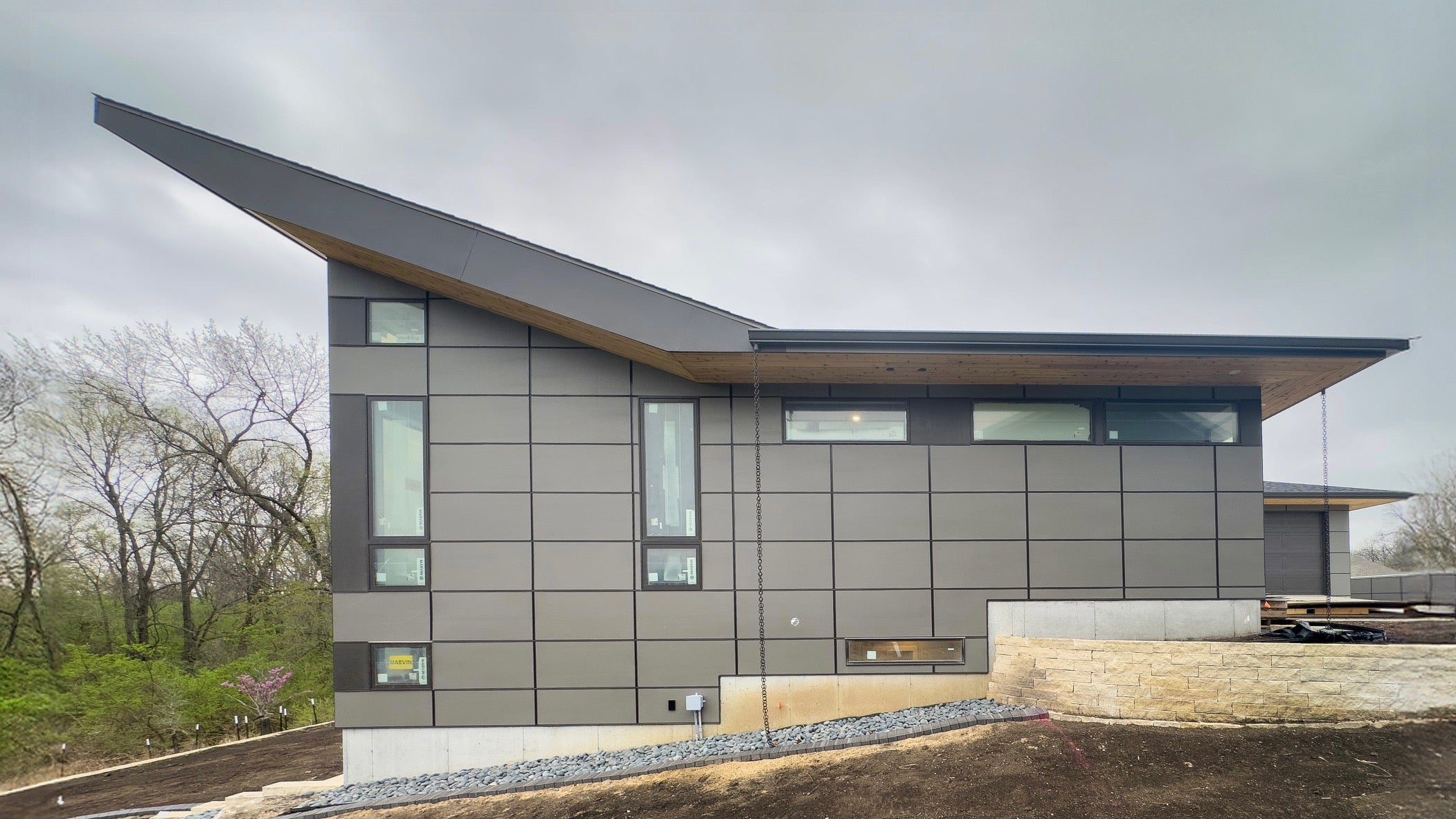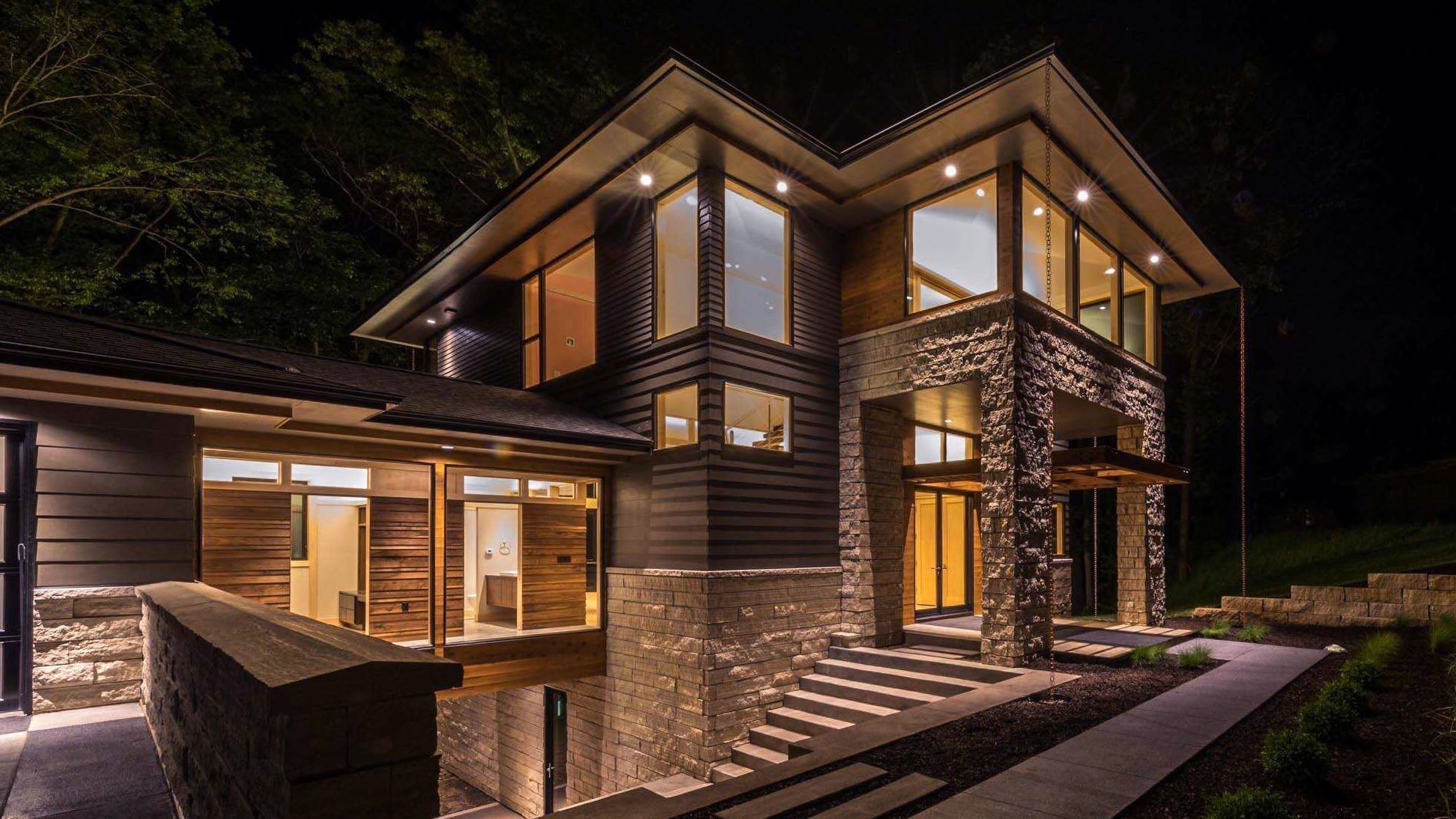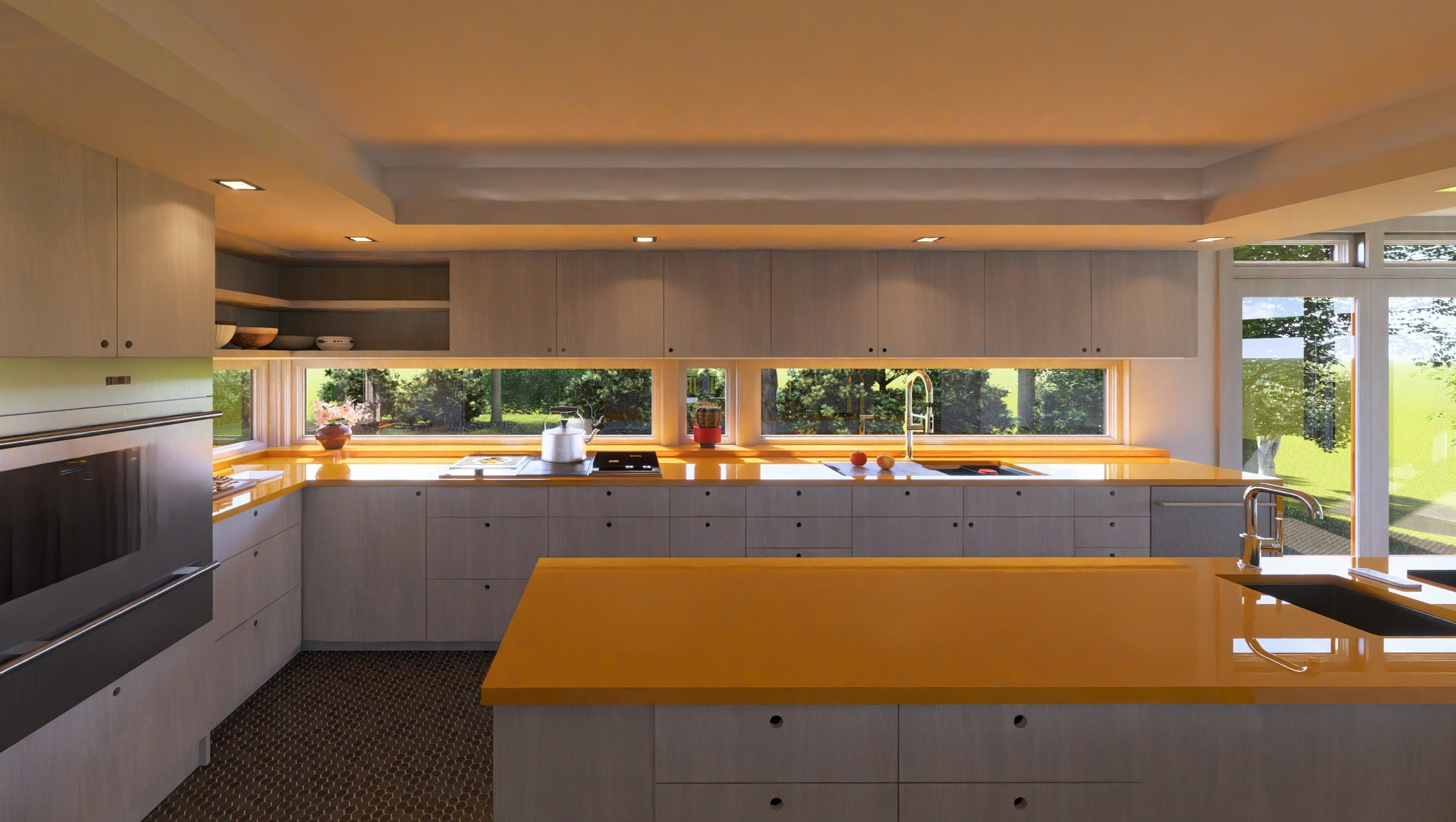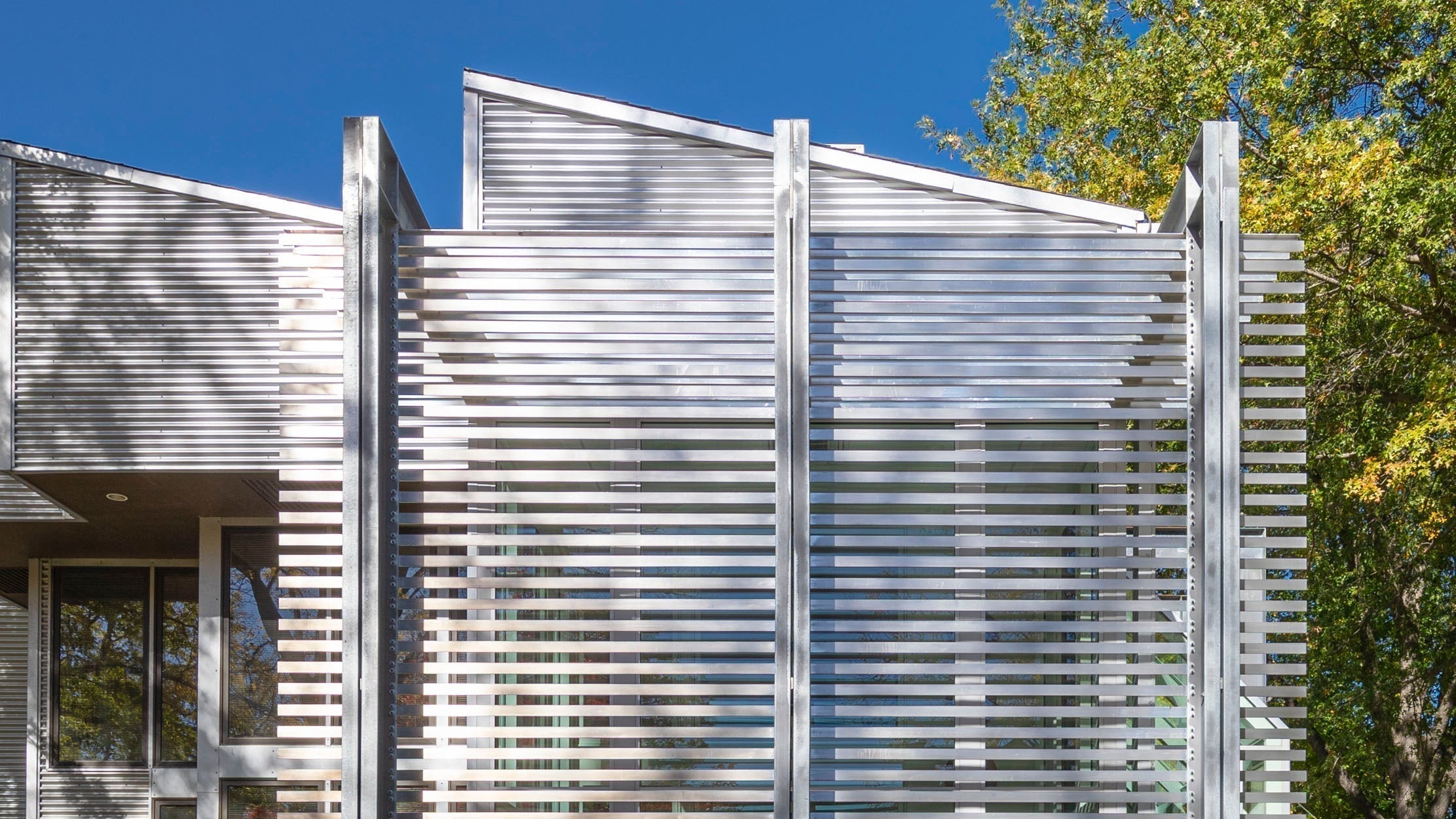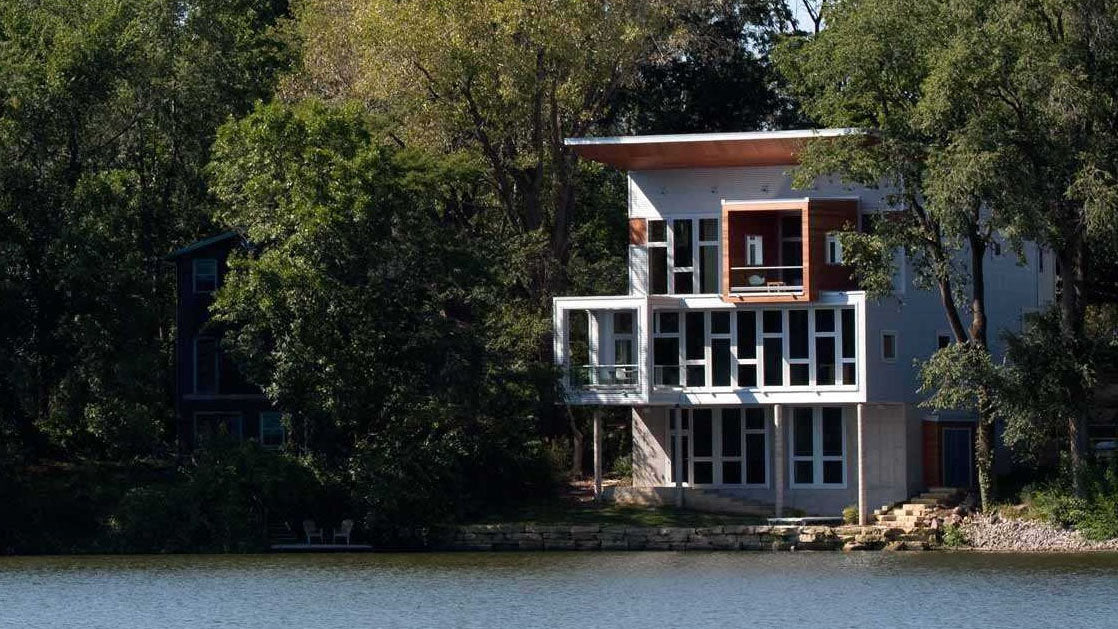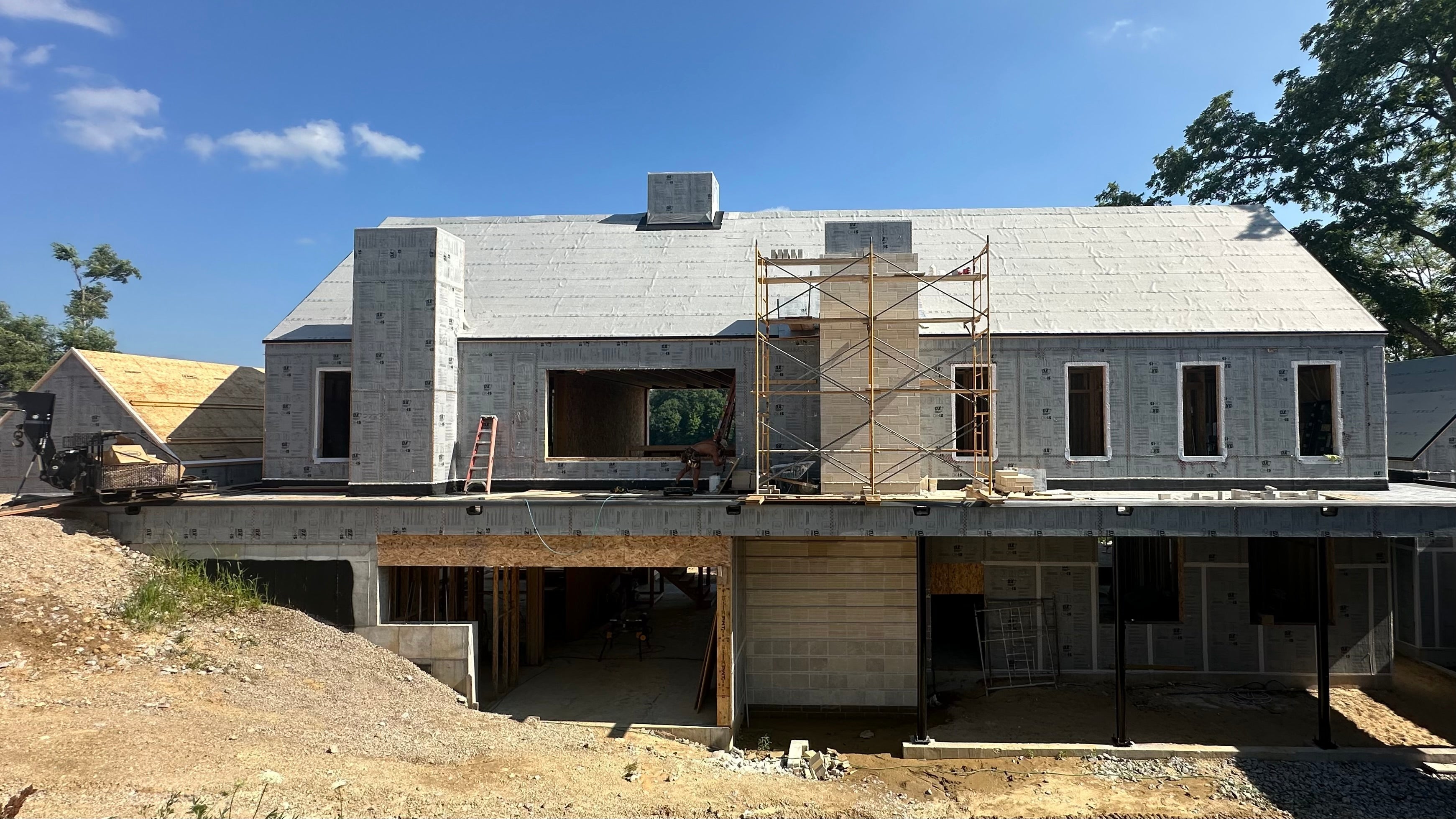Balancing style, function, and long-term performance
Choosing the right roof is a fundamental decision in designing a custom home. The roof not only protects your home from the elements but also shapes its character and contributes to energy efficiency and maintenance costs. At Akar Architecture, we guide clients through the key factors to consider so your roof complements your home’s design while standing up to your climate and lifestyle.
1. Understanding Roof Pitch: The Balance of Form and Function
Roof pitch is the slope of your roof, typically expressed as a ratio (e.g., 4:12 or 6:12), meaning how many inches the roof rises vertically for every 12 inches horizontally. Pitch affects both how your home looks and how well the roof sheds water, snow, and debris.
- Climate matters: In snowy regions, steeper pitches (8:12 or more) help snow slide off, reducing ice dam risks. Lower pitches work better in warmer climates by minimizing heat absorption and enabling modern flat or low-slope styles.
- Architectural style: Steeper roofs often evoke traditional or historic homes; low slopes align with modern, contemporary designs.
- Building codes and structure: Local codes may set minimum pitches, and your roof’s framing and material must support the pitch you choose.
- Cost implications: Low-pitched roofs generally cost less because they use less material and are easier to build.
2. Common Roof Pitches and Their Characteristics
- Flat (0:12): Mostly commercial, but can be used in modern homes with proper drainage.
- Low slope (1:12 to 2:12): Sleek, modern appearance; requires high-quality waterproofing.
- Standard slope (3:12 to 9:12): Versatile, common in residential homes, balances look and performance.
- Steep slope (10:12+): Classic and functional in snowy climates but can cost more.
3. Choosing Roof Shape and Details

Your roof shape (gable, hip, flat, shed, etc.) works with pitch to create your home’s silhouette. Eaves and overhangs affect how rainwater is directed away and contribute to the home’s character. Coordinating pitch with roof shape and overhangs is essential for both beauty and performance.
4. Roofing Materials: Pros and Cons
Choosing roofing material involves balancing aesthetics, durability, maintenance, cost, and climate suitability. Here’s a quick overview:
Asphalt Shingles
Pros: Affordable, widely available, easy to install, variety of colors and styles.
Cons: Moderate lifespan (15–30 years), can be damaged by extreme weather, less eco-friendly.
Metal Roofing
Metal roofing is prized for its durability, longevity, and energy efficiency, making it an excellent choice for many custom homes. Metal roofs come in a variety of materials and styles, allowing for great flexibility in design and performance.
Materials:
- Steel: Often galvanized or coated with galvalume (a zinc-aluminum alloy), steel is strong, affordable, and widely used. Galvalume offers excellent corrosion resistance.
- Aluminum: Lightweight and naturally resistant to rust, aluminum is ideal for coastal or humid environments.
- Copper: Offers unmatched longevity and a distinctive, evolving patina, but comes at a premium cost.
- Zinc: Durable and self-healing (it forms a protective patina), zinc is popular in high-end custom homes with modern aesthetics.
Styles:
- Standing Seam: Features vertical panels with raised seams that interlock, providing excellent weather resistance and a sleek, modern look. Popular for both residential and commercial projects.
- Corrugated Panels: Characterized by wavy ridges, these panels are typically more economical and provide a rustic or industrial feel.
- Metal Shingles: Designed to mimic traditional roofing materials like wood shakes or slate, metal shingles combine the durability of metal with a classic appearance.
- Architectural/Structural Panels: Larger panels designed for both aesthetic and structural performance, often used on contemporary homes with bold lines.
Pros:
- Extremely durable and long-lasting (50+ years)
- Excellent resistance to fire, wind, hail, and harsh weather
- Reflects solar radiant heat, improving energy efficiency
- Lightweight compared to tile or slate, easing structural demands
Cons:
- Higher upfront cost than asphalt shingles
- Can be noisy during rain or hail without proper insulation
- Potential denting from hail or falling debris
- Requires professional installation for optimal performance
Tile (Clay or Concrete)
Pros: Long-lasting (75+ years), classic upscale look, fire-resistant.
Cons: Heavy (may require reinforced structure), expensive, needs professional installation.
Slate
Pros: Natural stone with exceptional durability and timeless beauty (75+ years).
Cons: Very heavy and expensive; requires expert installation and structural support.
Composite/Synthetic
Pros: Mimics slate, tile, or wood shakes at lower cost and weight; durable and low maintenance.
Cons: Newer product lines with less proven long-term track record.
Wood Shakes/Shingles
Pros: Warm, rustic aesthetic.
Cons: Requires maintenance, susceptible to fire and rot, shorter lifespan.
5. Solar Roof Options: Integrating Energy Generation
Solar roofing is becoming popular in custom homes for energy savings and sustainability. Two main approaches exist:
On-Roof Solar Panels
Panels are mounted above your existing roofing material on racks.
Pros: More affordable upfront, flexible installation, easy to replace or upgrade.
Cons: Visible racks can impact aesthetics; may add wind load.
In-Roof Solar Panels (Solar Tiles)
Solar panels integrated directly into roofing material (e.g., solar shingles).
Pros: Sleek, seamless appearance; integrates into roofline.
Cons: Higher cost, complex installation, requires compatible roofing materials.
Both systems offer similar energy efficiency and durability, but installation complexity and aesthetics differ. Your choice depends on your budget, design goals, and how you want the solar system to look and perform.
■ AKAR Opinion
Your roof impacts your home’s curb appeal, durability, energy costs, and maintenance. There’s no one-size-fits-all solution—each choice depends on your site, climate, style preferences, and budget.
At Akar Architecture, we approach roof design holistically—balancing aesthetics, function, and buildability to craft roofs that protect and define our clients’ homes for years to come. Whether you prefer a steep, traditional gable or a sleek, low-slope metal roof with integrated solar, we help you make smart choices that fit your vision and lifestyle.

